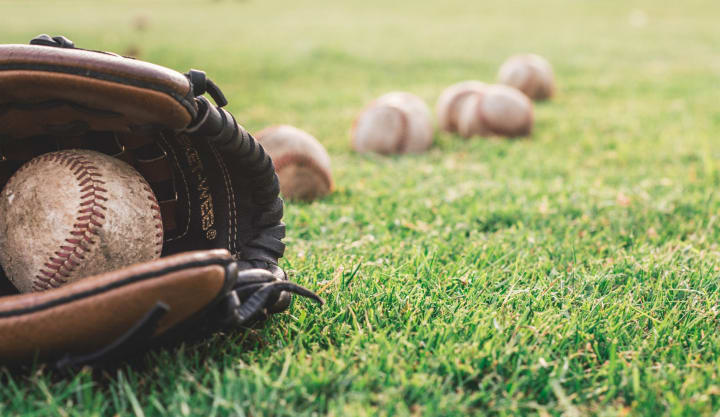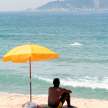Best Books for Baseball Fans
Many of us are admittedly die-hard sports crusaders, so why not feed your habit with some of the best books for baseball fans?

It was the mid-1940s and World War II caused a spike in civilian fear. Men were being drafted, families were rationing food, and there were major political changes afoot.
Americans desperately needed something to take their minds off the war, and America chose baseball.
Baseball will probably never fall out of fashion and will remain America's favorite pastime. The sport has become a patriotic part of American culture, where we route for our home team and wear that jersey loud and proud in the stadium (or perhaps watch diligently from our living rooms). For those who hate the off season, it'll be easy to fill that void with some of the best books on baseball.
The Boys of Summer by Roger Kahn is a non-fiction book based on the author himself, who recounts events from his childhood in Brooklyn and his career starting out as a reporter for the New York Herald Tribune. Kahn relates his story to the Brooklyn Dodgers and their victory in the 1955 World Series.
Kahn also tracks the lives of famous baseball players and captures the love affair that America had with baseball and brings a time of nostalgia and back into present day.
The Boys of Summer is praised as a recreation of American culture as it is able to capture readers of all ages who can recall the sentimentality and be brought into a world where baseball teams were at the center of the nation.
Next to Babe Ruth, one of the most discussed baseball stars in history might have been Leroy “Satchel” Paige. Paige joined the Cleveland Indians during the pre-integration era when he was in his forties and was easily considered by many to be one of the best pitchers to have lived.
Paige gained fame due to his reputation of years in the Negro leagues, which were professional baseball teams that were made up of predominantly African-American players and sometimes other minorities.
In this biography, Ribowsky aims to honor Satchel’s reputation in baseball history by revealing Paige’s prior years in the Negro leagues. Don’t Look Back successfully brings a lesser-known athlete that stands in Babe Ruth’s shadow when America was on the cusp of a social change.
There are three types of people: those who are Mets fans, those who are Yankees fans, and those who don’t live in the tristate area. Either way, you’re likely familiar with the rivalry between the two, and many argue that Mets fans root for the underdog while Yankees fans are loyal to the consistent winners.
Using oral histories, Can’t Anybody Here Play This Game? chronicles the 1962 New York Mets season by analyzing the famous team’s very first season as an expansion team. The title is said to have come from the then-current Mets manager, Casey Stengel, when he complained, “Can’t anybody play this game?” out of pure frustration for the team’s apparent incompetence.
This book is a must-have for those who remain loyal to the New York Mets.
Baseball star Joe Pepitone was a partier when he was the Astros pitcher in the 1970s. He partied with Frank Sinatra and Mickey Mantle, slept with dozens of women, and dabbled in drugs like cocaine and Quaaludes. Needless to say, Pepitone was controversial.
About 40 years later with the help from journalist Berry Stainback, Pepitone released somewhat of an auto-biography of his life. The self-deprecating title implies that Pepitone knows he could have made better decisions during his time in the spotlight.
Pepitone writes about his life in a therapeutically confessional manner but is also honest about the party scene and sudden rise to fame he’d become addicted to. This book is highly praised as an honest truth about a man who got lost in the limelight.
Jackie Robinson is easily a household name. He is famously known as the major league’s first African-American baseball player and one of the best baseball players of all time. This book touches base on Robinson’s rise to integrating major league baseball with heavy links between the Civil Rights movement and African-American history.
The integration of baseball in the late 1940s created a cultural shift for Americans. Suddenly, America’s favorite past time had completely changed—it wouldn’t be for several years that African-Americans would be desegregated, but this was a huge stepping stone in that direction.
Brooklyn Dodgers executive Branch Rickey recruited Jackie Robinson, a former army lieutenant and remarkable athlete. In doing so, Robinson suffered from threats, but writer Tygiel argues that this was a wakeup call for many Americans about the racism that coherently existed.
Another book to respect the famous players pre- and post-integration, Only the Ball was White begins in the 1920s when New York Giants sent a scout to watch a young Cuban play for the Foster’s American Giants, a Negro league. From there, we are brought throughout the tough lines that African-Americans and Latino minorities had to conquer to make their way into the major leagues.
Peterson respectfully sheds light on forgotten minority players who had suffered from rejection in the years leading up to what would later become successful careers. The book reminds us that we looked through rose-colored lenses when baseball became America's favorite pastime.
Racism, segregation, and Jim Crow laws were very much alive during a time that people most often look fondly upon.
Long-term baseball fans might have heard about the infamous “pitch that killed.” Taking us back to the 1920 Indians season, we relive the story through Carl Mays, Joe Sewell, and Ray Chapman when May’s powerful but ill-striking pitch hit Chapman in the head, which killed him short after. Sowell explores why Mays became "the bad guy" in baseball even though the incident was immediately ruled accidental; many of the best baseball podcasts discuss it.
The Pitch That Killed goes into each of the then-player’s stories, their home lives, their childhoods, and everything off- and on-field. It reads like an oral history that describes these people as intricate characters, bringing them back to life through family histories, baseball victories, and fears and dreams.
Considered one of the best books for baseball fans, the day of the 1954 World Series is also known as the day of “The Catch.” This book documents one of the most nail-biting World Series in history while focusing on Hall of Fame baseball player, Willie Mays, who made the most famous catch in baseball history.
Arnold Hano recalls his own recollection of that day, when he attended the game at four years old. As one of the greatest moments in Hano’s life, he describes each inning like they were the longest seconds to have existed.
Hano also analyzes the strategies during that World Series game and reflects on the undeniable heroes and what it really takes to play baseball. He shows us that baseball is not “just a game”—but a strategy.
Bill “Spaceman” Lee played for the Expos and was well-known for his rebellious reputation. With help from baseball writer Richard Lally, Bill Lee writes a hilarious memoir about his antics from childhood all the way through adulthood.
This book is considered one of the best books for baseball fans, though because of Lee’s humor and approach to his life through fun storytelling, The Wrong Stuff can be right for anybody. Lee hilariously describes his life, including anecdotes like when he discovered that “marijuana never hammered me like a good Camel.”
Lee easily shows us how the song “Bill Lee” by Warren Zevon came to be. Maybe you recognize the intro:
You're supposed to sit on your ass and nod at stupid things...Man, that's hard to do.
Originally a Boston Red Sox fan, Donald Hall writes this biography on Ellis’s rise to stardom while fighting against the inevitable racism and post-integration issues that were present at that time. Thanks to Ellis as a direct source, Hall also takes us “behind the scenes” of the game and the baseball industry.
And probably most interestingly, Dock Ellis in the Country of Baseball discusses Ellis’s most famous no-hitter which at the time was the center of controversy. Though there were speculations, nobody knew if Ellis was under some sort of influence during his no-hitter as a pitcher for the Pirates. The first edition, published in 1976, says that Ellis was drunk, but the later '89 edition tells the truth: it's an interesting story to know how he pitched a no-hitter while high on LSD.

Pexels.com
Though football doesn’t fall far behind as America's favorite sport, there’s a sort of cultural significance when it comes to an old-fashioned baseball game.
Sitting in that aluminum seat with a hot dog in one hand, a beer in the other, and the sun beating down on your face is an afternoon that promises singing, shouting, and laughter that has become an American staple.
Choose from some of the best books for baseball fans for the reader in your life.
About the Creator
David McCleary
Holistic health practitioner. Believes in using natural remedies over traditional medications whenever possible. Volunteers at a recycling plant.






Comments
There are no comments for this story
Be the first to respond and start the conversation.